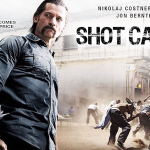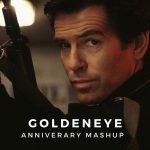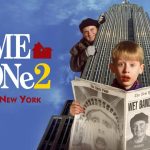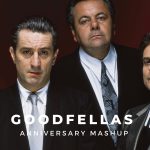Halloween (1978)

Suggested videos for you:
Suggested videos for you:
Suggested videos for you:
Suggested videos for you:
Suggested videos for you:
@lovrstify99 Avengers Endgame Full Final Battle in Hindi #movie #movieclips #avengers #trend #trending
Suggested videos for you:
@licktowing11 Battle of Iwo Jima – The Pacific movie movieaction #war
John Carpenter’s Halloween (1978) is a landmark in the horror genre, often credited with popularizing the slasher film formula. It’s a tense, atmospheric film that prioritizes suspense over gore, making it one of the most effective and influential horror movies of its time. Set on Halloween night in the fictional town of Haddonfield, Illinois, the film follows the terror unleashed by Michael Myers, a masked killer who escapes from a mental institution and returns to his hometown to stalk a group of teenagers.
Plot: The film opens with a chilling prologue showing six-year-old Michael Myers brutally murdering his sister on Halloween night in 1963. Fast forward 15 years, and Michael escapes from the sanitarium where he’s been held, returning to Haddonfield to resume his killing spree. Laurie Strode (played by Jamie Lee Curtis in her breakout role), a high school student, becomes his primary target, while Dr. Sam Loomis (Donald Pleasence), the psychiatrist who knows Michael’s true evil, desperately tries to track him down.
Atmosphere and Direction: John Carpenter’s direction is masterful in its simplicity. He builds tension through the use of long takes, minimal dialogue, and eerie cinematography. The suburban setting feels ordinary and relatable, which heightens the horror when Michael begins his stalking. Carpenter makes excellent use of shadows and space, turning the seemingly safe neighborhood into a place of dread.
The pacing of the film is deliberate, slowly building a sense of unease as Michael watches Laurie and her friends from a distance, blending into the background in several iconic shots. It’s this restraint that makes Halloween so effective; the fear comes not from constant action, but from the anticipation of it.
Score: Carpenter’s iconic score, with its simple but haunting piano melody, is one of the most recognizable elements of the film. It plays a crucial role in creating an atmosphere of dread and perfectly complements the tension on screen. The repetitive, minimalist nature of the music mirrors Michael’s relentless pursuit of his victims.
Character and Performance:
- Jamie Lee Curtis delivers a memorable performance as Laurie Strode, a character who would go on to become the quintessential “final girl” in horror. Laurie is resourceful, intelligent, and relatable, making her a heroine audiences can root for. Curtis’s vulnerability and strength in the role helped define a new kind of horror protagonist.
- Donald Pleasence as Dr. Loomis provides a sense of gravitas, portraying Michael as a figure of pure, unstoppable evil. Loomis’s obsession with stopping Michael and his ominous warnings add to the growing sense of impending doom.
Michael Myers: One of the most iconic villains in horror history, Michael Myers is terrifying because of his silence, blank mask, and seemingly emotionless demeanor. He is more of a force of nature than a person, embodying pure evil without explanation or motive, which makes him scarier than the average horror movie killer. The film’s refusal to provide much backstory for Michael adds to his mystique and menace.
Influence and Legacy: Halloween set the template for the slasher genre, inspiring countless imitators. Its influence can be seen in films like Friday the 13th and A Nightmare on Elm Street, and it launched a long-running franchise with multiple sequels and reboots. Carpenter’s film stands apart from its successors due to its emphasis on suspense and atmosphere rather than blood and gore.
Critique: If there’s any critique, it’s that the film’s slow pacing and minimal character development may not appeal to modern audiences who expect faster, more action-packed horror. However, it’s precisely this pacing that allows Carpenter to craft such a palpable sense of dread.
Final Thoughts: Halloween (1978) is a masterclass in tension and minimalist horror. John Carpenter’s vision, combined with an unforgettable villain, a strong lead performance by Jamie Lee Curtis, and one of the most iconic horror scores of all time, ensures its place as one of the greatest horror films ever made. Its ability to terrify without relying on excessive violence or gore is a testament to its enduring power.











